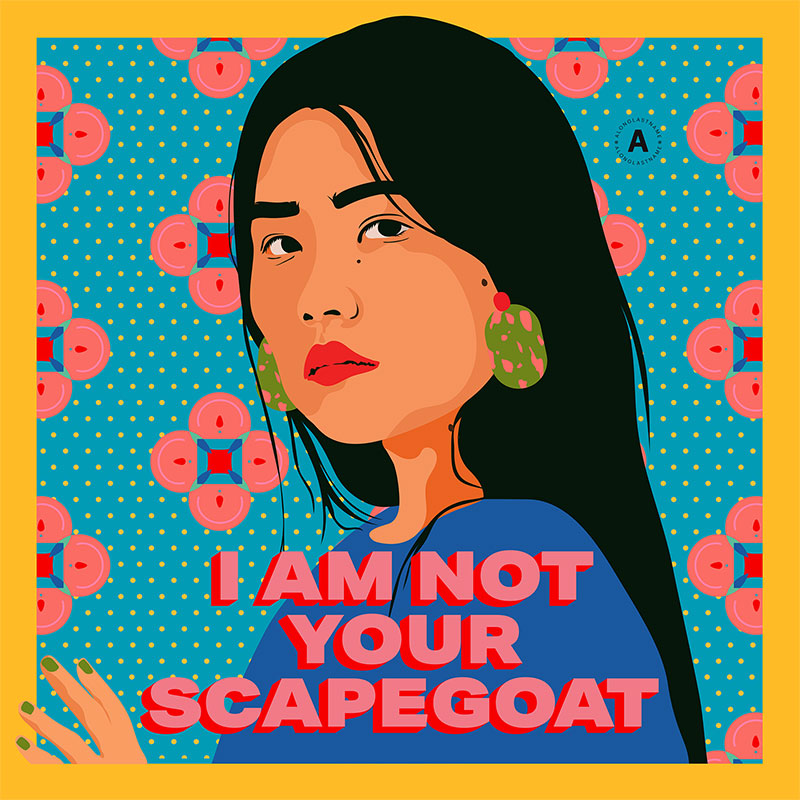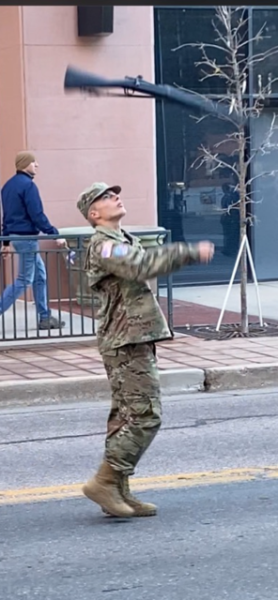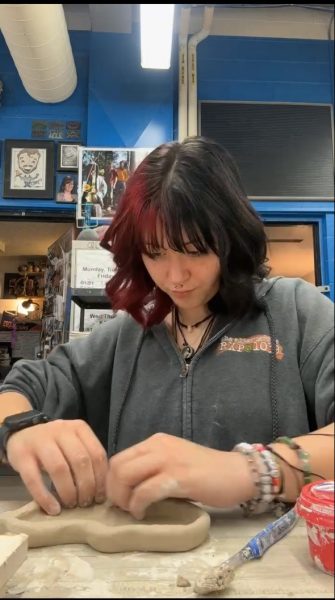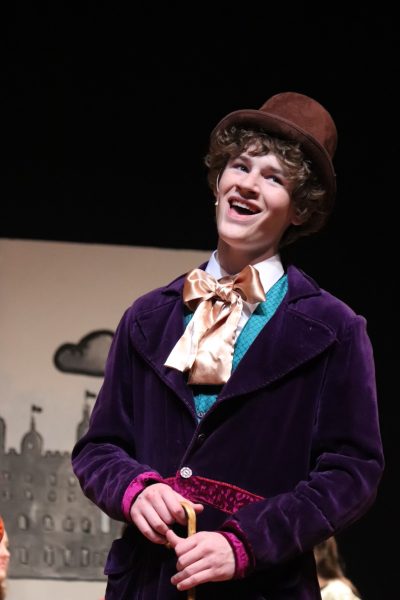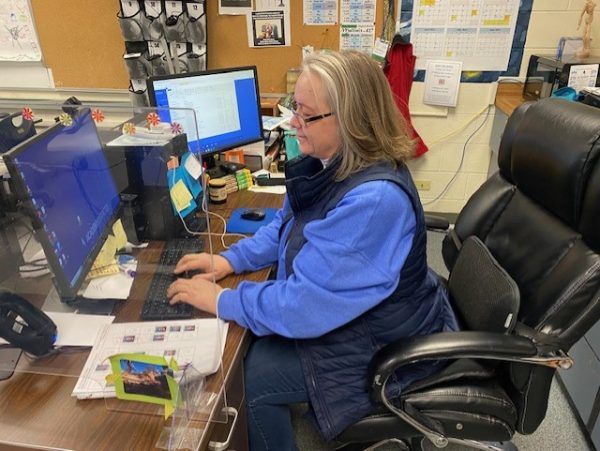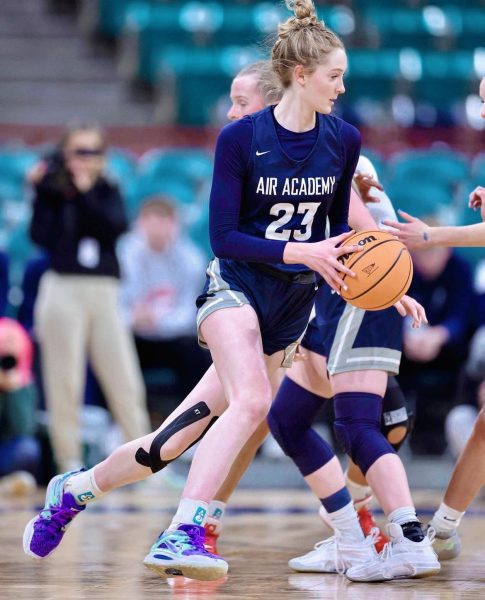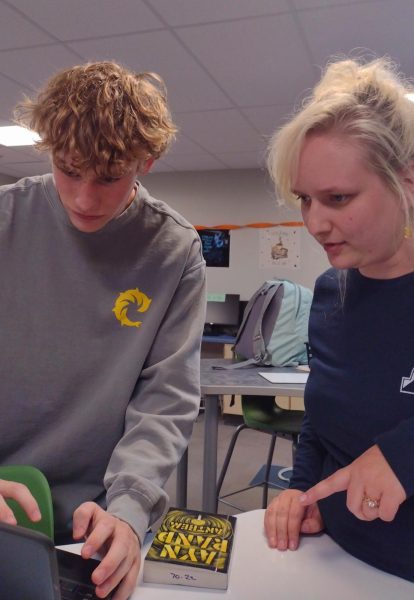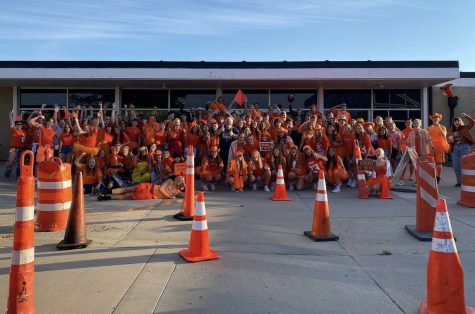“Our struggles are still valid”: The Asian American Story
A portrait of an Asian American woman as part of New York City’s “I Still Believe in Our City” public awareness campaign. Drawn by Amanda Phingbodhipakkiya, the daughter of Thai and Indonesian immigrants, the posters were then placed in locations where Asian hate incidents had occurred. The posters can now be found all over the city.
The Asian American community is in mourning.
In the past year, we have mourned for the lives lost in acts of senseless violence, for those who no longer feel safe when leaving their home, for a facade of safety that perhaps never existed, to begin with.
In a horrifying series of events, on March 16, 2021, eight lives were stolen in a string of shootings in Atlanta, Georgia. Of the eight victims, six were Asian women. Prosecutors have yet to charge the shooter with a hate crime, which has drawn intense criticism. Activists have cited the gunman’s targeting of businesses primarily owned by Asian women as a clear intersection of racism and sexism – and as yet another example of the frequent hypersexualization of Asian women.
“Apparently [the shooter] struggled with sexual addiction, and his actions were him lashing out,” said Ashton Foxe, a sophomore at Air Academy. “However, he chose places that had a greater demographic of Asian American women. One can infer that part of this was because of the very prevalent fetishization of Asian women within our society.”
The pandemic has been accompanied by a drastic escalation of anti-Asian rhetoric and hate. In the last year and a half, 3,795 report hate crimes have been perpetrated against Asians in the United States.
According to Stop AAPI Hate, a nonprofit reporting center that tracks incidents of discrimination, hate and xenophobia against AAPI (Asian Americans and Pacific Islanders) in the United States, a majority of these hate crimes go unreported. 3,795 is a large number, but one that portrays but a small fraction of the true extent of Asian hate.
In one attack in January, Vicha Ratanapakdee, an 84-year-old Thai man, was shoved to the ground and died from his injuries in the hospital. Last Saturday, 53-year-old Chiling Lee, a postal worker, was stabbed five times while walking home in San Francisco. In a similar incident, a 75-year-old man was assaulted in Oakland and passed away from his injuries. In March, 76-year-old Xiao Zhen Xie was suddenly punched in the eye while waiting at a traffic light. She fought back.
Epithets such as “Kung-flu” and “China virus” fanned the flame. According to a separate report conducted by Stop AAPI Hate, 30% of incidents involving AAPI utilized a form of anti-Chinese or anti-Asian rhetoric.
“People will find excuses to hate others, and COVID-19 has been used as an excuse to be racist,” said Foxe. “I’m thankful people are finally acknowledging this and talking about it.”
Yang Yang, a lecturer of Chinese culture and language at the University of Colorado Colorado Springs, says that anti-Asian sentiment is not merely a result of COVID-19 but an indication of greater structural and institutionalized racism.
“It is never an isolated issue. It has been systematic. The virus was merely a tool used to target a particular group of people,” said Yang. “It is an absurd and low play of politics.”
Like most other minority groups, Asian Americans have long been defined by stereotypes. The most persistent of these are the “model minority myth” and the “perpetual foreigner,” which have become synonymous with Asian Americans as a whole.
The stereotype of Asian Americans being “perpetual foreigners” stems from the idea that Asian Americans are foreigners – and will remain so even after multiple generations. This portrays Asians as inherently “not American,” and therefore unable to integrate.
The flip-side of this is the “model minority myth,” which portrays Asians, especially those from Eastern Asia, as naturally hard workers and very intelligent. According to the “model minority myth,” Asian Americans have become successful by following their cultural norms, and thus, are naturally attuned to economic and social success.
This idea is used to dispute claims of racial discrimination against Asian Americans and effectively ostracize Asians from other racial groups.
“People have an idea of what Asian Americans should look like – perfect family, steady jobs, straight-A’s,” said Foxe. “The “model minority myth” isn’t representative of AAPI at all. Instead, it’s unfair to both Asians and other minorities. By pitting groups of people against each other, all we’re doing is increasing hate.”
“People should judge others as individuals, not based on race,” urged sophomore Langston Ball.
Stereotypes such as those perpetrated by the “model minority myth” are no less harmful than the other stereotypes commonly associated with those of Asian descent.
Throughout history, the Asian American story has become riddled with grief, tragedy and indiscriminate violence. Chinese immigrants first arrived in the United States in the 1850s, largely to work as miners and railroad constructors in California and other western states.
In 1854, in People v. Hall, the California Supreme Court ruled that those of Asian descent could not testify against a Caucasian person in court. This caused the testimonies of three Chinese witnesses in the trial of George Hall to be rejected; Hall faced no punishment for the murder of Chinese immigrant Ling Sing.
In the Chinese Massacre of 1871, in Los Angeles, 17 Chinese men and boys were lynched.
In 1882, Congress passed the Chinese Exclusion Act, which banned Chinese immigration for 20 years. President Chester A. Arthur vetoed the bill but signed another version with a ban of 10 years. The Chinese Exclusion Act was extended for another 60 – and would not be repealed until 1943.
In 1900, San Francisco was struck by an outbreak of bubonic plague. The outbreak likely began aboard a ship from Australia, but city officials faulted San Francisco’s Chinatown residents. The entirety of Chinatown was quarantined and only Caucasian residents were allowed in or out. Additionally, Chinese residents were subjected to random and invasive home searches and property destruction.
In 1982, the murder of Chinse-American Vincent Chin drew national outrage. After being mistaken for Japanese, Chin was beaten to death by two Caucasian men – who then received a $3000 fine each and served no prison time.
These are the tragedies that have shaped Asian American history. And yet, most of these events are excluded from history books and classes.
“Racism against Asian Americans hasn’t been talked about before,” said Foxe. “Of course, Asian Americans don’t experience the same level of systemic oppression and discrimination as African Americans or indigenous people, but our struggles are still valid.”
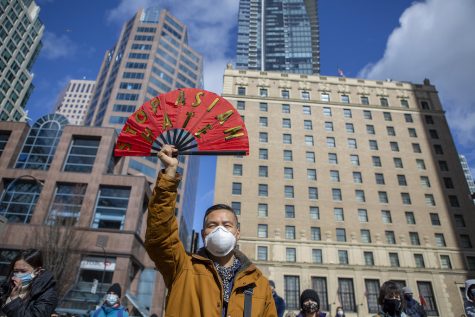
Moreover, Asian hate is not a phenomenon strictly located in the United States. Anti-Asian hate crimes have been perpetrated in countries such as New Zealand and Canada, where 1,150 incidents were reported throughout last year.
Ellen Ge, a sophomore at the Sir Winston Churchill School in British Columbia, Canada, expressed her frustration at how many have responded to Asian hate.
“I don’t understand why it’s taken so long for people to realize that Asians are heavily racialized,” said Ge. “It is incredibly sad how those who love to consume the culture of those being hurt will then refuse to speak up.”
For Asian Americans, the Stop Asian Hate movement has been vital in creating an incredibly crucial nationwide conversation regarding Asian discrimination.
“Racism is real,” said Yang. “As an Asian myself, I never saw ‘us,’ or only one group of people being the victim of racism. Many races suffer. This movement, which I fully support, is one vital part of the effort to protect basic human rights.”
To help stop Asian hate, PBS News Hour recommends donating to anti-hate organizations such as Stop AAPI Hate, speaking out, and learning what to do as a bystander. For further tips, look to Anti-Asian Violence Resources.
“In this digital era, it is never easier to see news, video footage and personal stories related to racism,” continued Yang. “One does not need to experience it firsthand to feel the pain.”
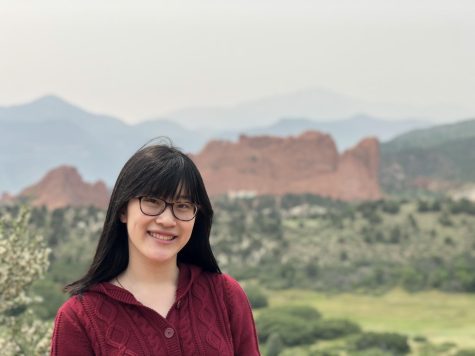
Hey all, I'm Elaine! I'm a junior, and I'm super excited to be in my second year with the Jetstream Journal. Additionally, I'm involved in speech and debate,...



